Here's my foolproof method for perfectly cooked soft-boiled eggs, with creamy whites and thick, luscious yolks.

I've always loved soft-boiled eggs, but cooking them seemed elusive. The goal: delicate, fully cooked but still soft egg white, enveloping a warm, creamy, thick-yet-runny yolk. The secret? Lower the uncooked egg into gently boiling water. Once you place the egg in the water, it only takes five minutes of gentle boiling, and the egg is ready.
Ingredients
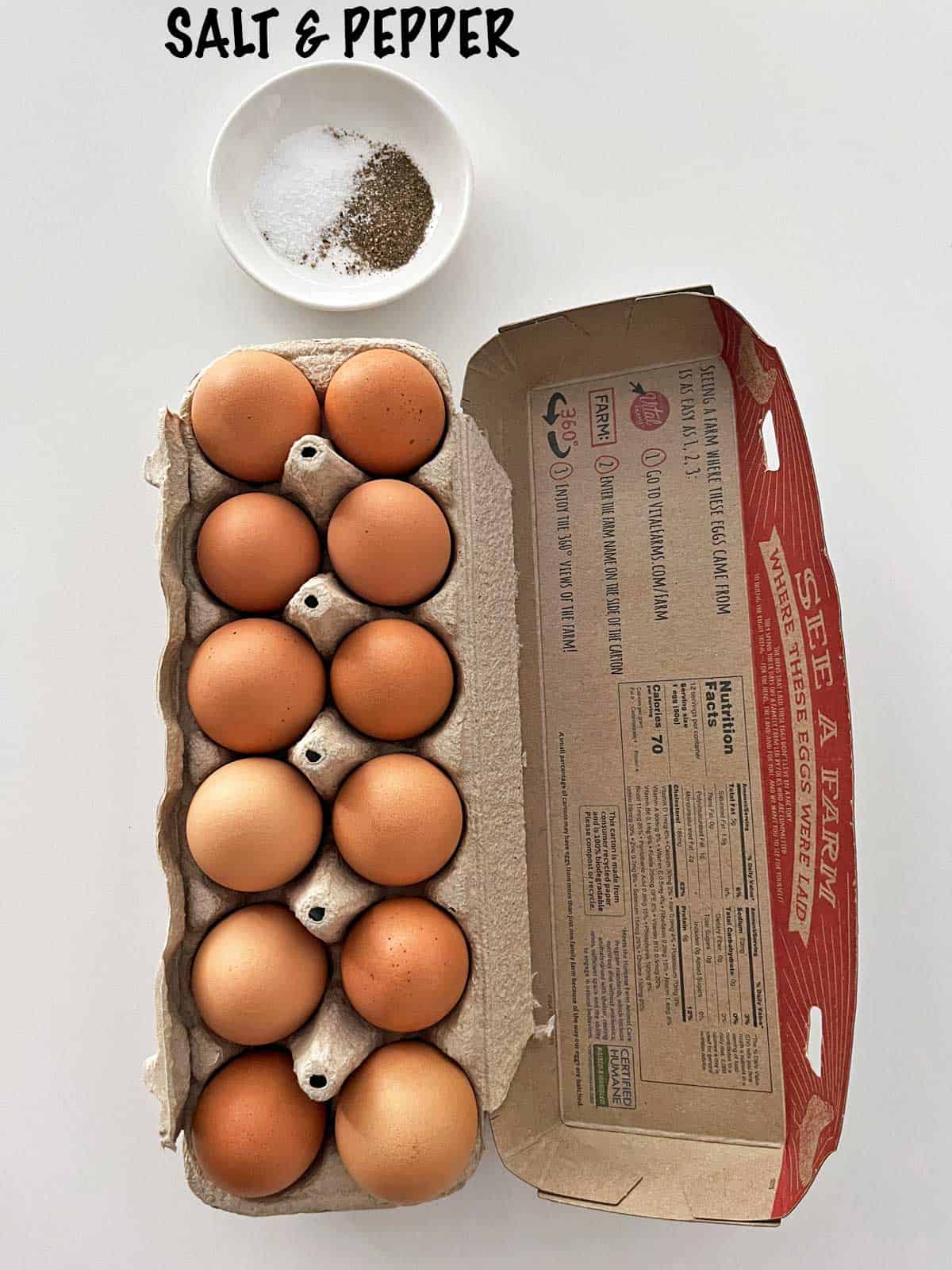
This recipe requires three ingredients: fresh eggs, kosher salt, and black pepper. You can add more seasonings. But typically, I only use salt and pepper, allowing the flavorful, creamy yolks to be the stars of the show.
Instructions
The detailed instructions and step-by-step photos are included in the recipe card. Here's a quick overview.
You start by boiling water in a small saucepan. When the water reaches a boil, lower the heat to medium-low. You want to maintain a gentle boil. Carefully lower the eggs into the pot. Leave the pot uncovered and allow the eggs to cook for exactly five minutes. It's best to set a timer.
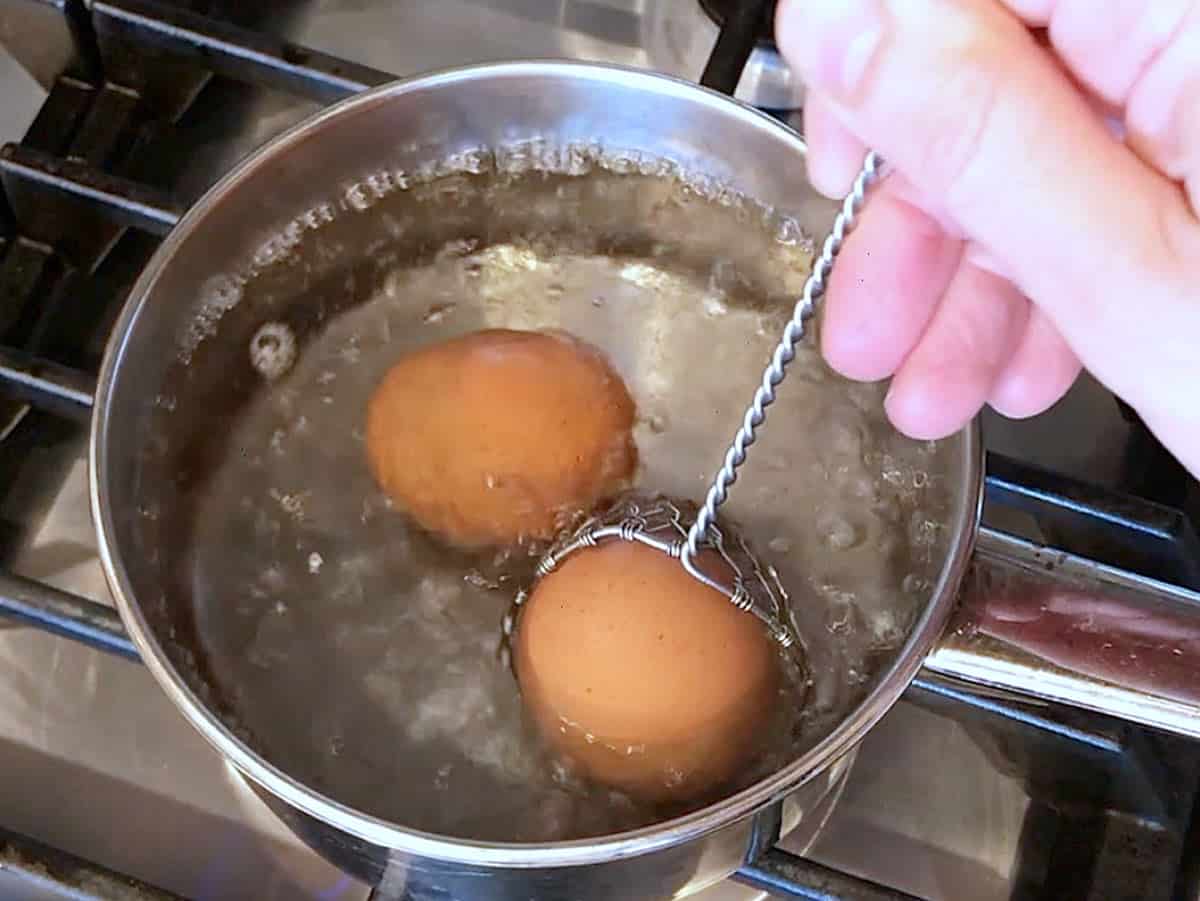
As soon as your timer goes off, use a slotted spoon to remove the eggs from the water and place them in egg cups. Allow them to slightly cool, then slice the top off with a sharp knife.
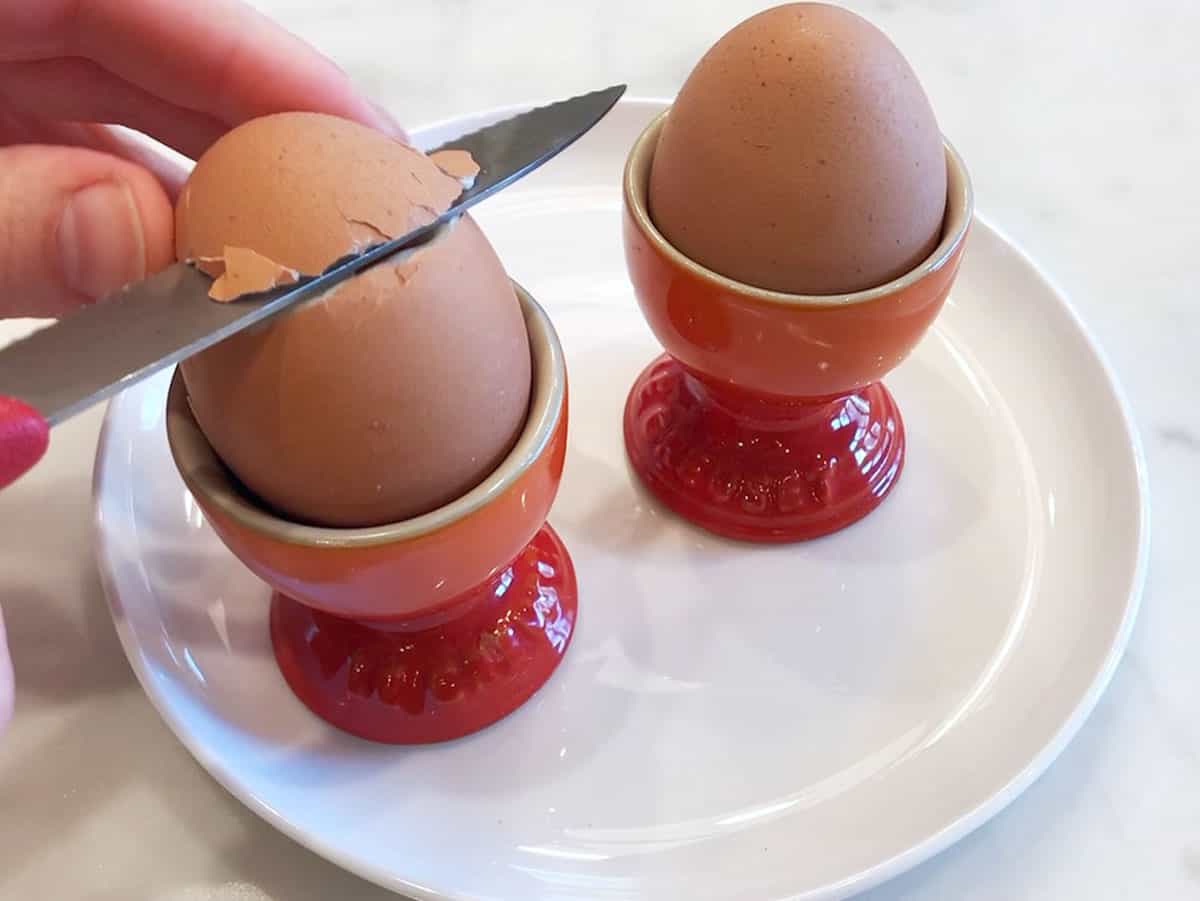
See? Thick yet gooey yolk, creamy white - perfection!
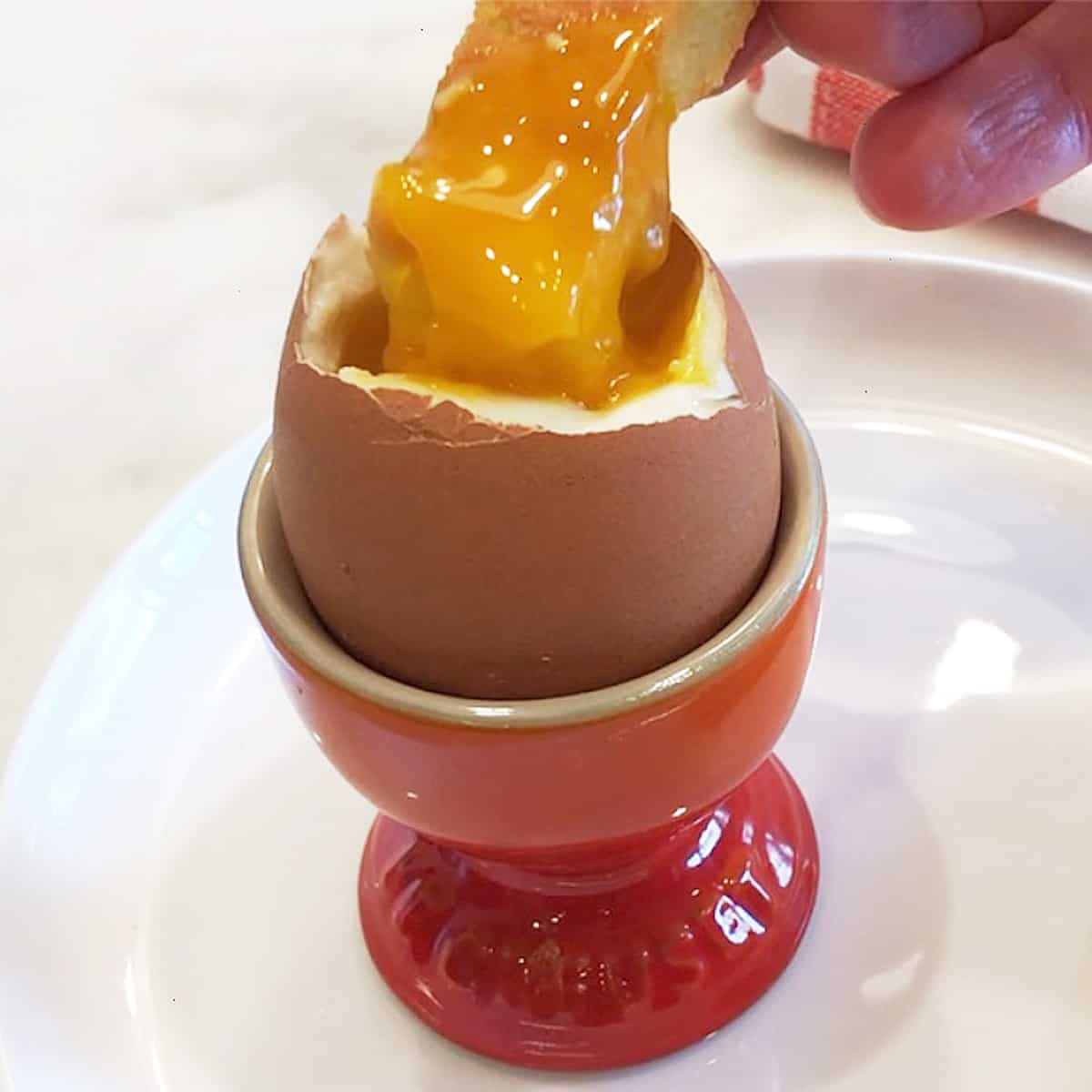
Recipe Tips
Use Fresh Eggs
In contrast to hard-boiled eggs, where you should use fairly old eggs (this makes them easier to peel), I recommend using eggs that are as fresh as possible in this recipe.
Runny vs Thick Yolk
If you make this recipe frequently, as I do, you should expect slight variations in how thick or runny the yolk is. Look at these two photos - one with a runnier yolk, the second with a thicker one. I cooked both on different occasions for exactly five minutes. Most likely, the water boiled more gently to produce the runnier yolk. Both were excellent, by the way.
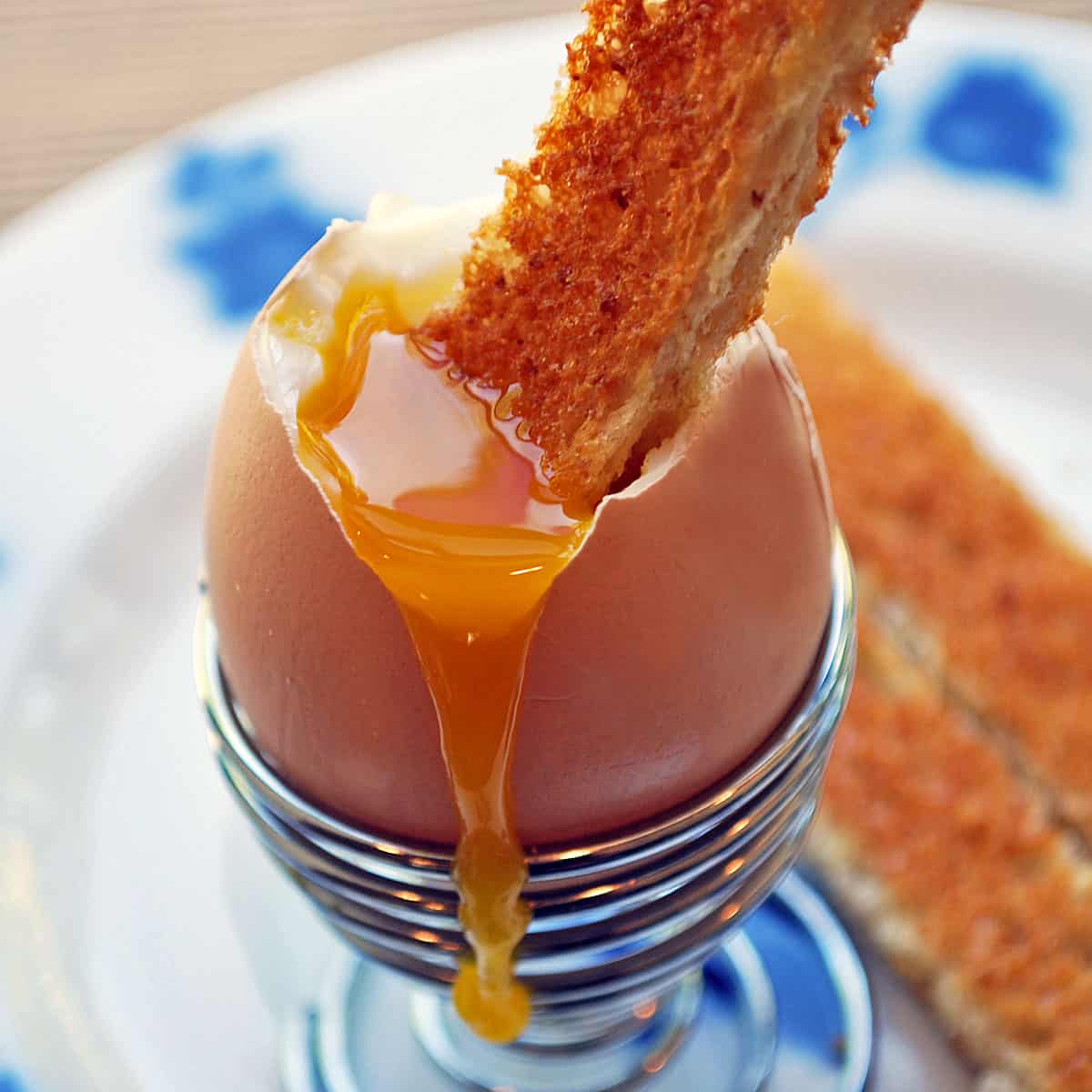

Recipe FAQs
It's best to use eggs that are not refrigerator-cold, especially since we're putting them into (gently) boiling water. However, some eggs seem to have thin shells and are prone to cracking, no matter what you do.
There are a few methods for doing that. One method is to use a spoon, but I like to use a sharp knife, as shown in the image below. I use the knife to tap on the top of the egg and crack the shell. Then, I use it to slice through the top part of the egg and remove it.
The best way I can help you visualize this is to watch the video below in the recipe card. You can see how vigorously the water is boiling.
You can keep the leftovers refrigerated, in their shell, and in an airtight container for up to two days. Reheat them by briefly placing them in simmering water for no longer than one minute.
Serving Suggestions
As shown in the photos on this page, I like to serve these eggs with toast soldiers made from keto English muffins or thick slices of almond flour bread.
Another great way to enjoy them, shown in the photo below, is to dip crispy oven-baked bacon (or microwave bacon) in the runny yolks.
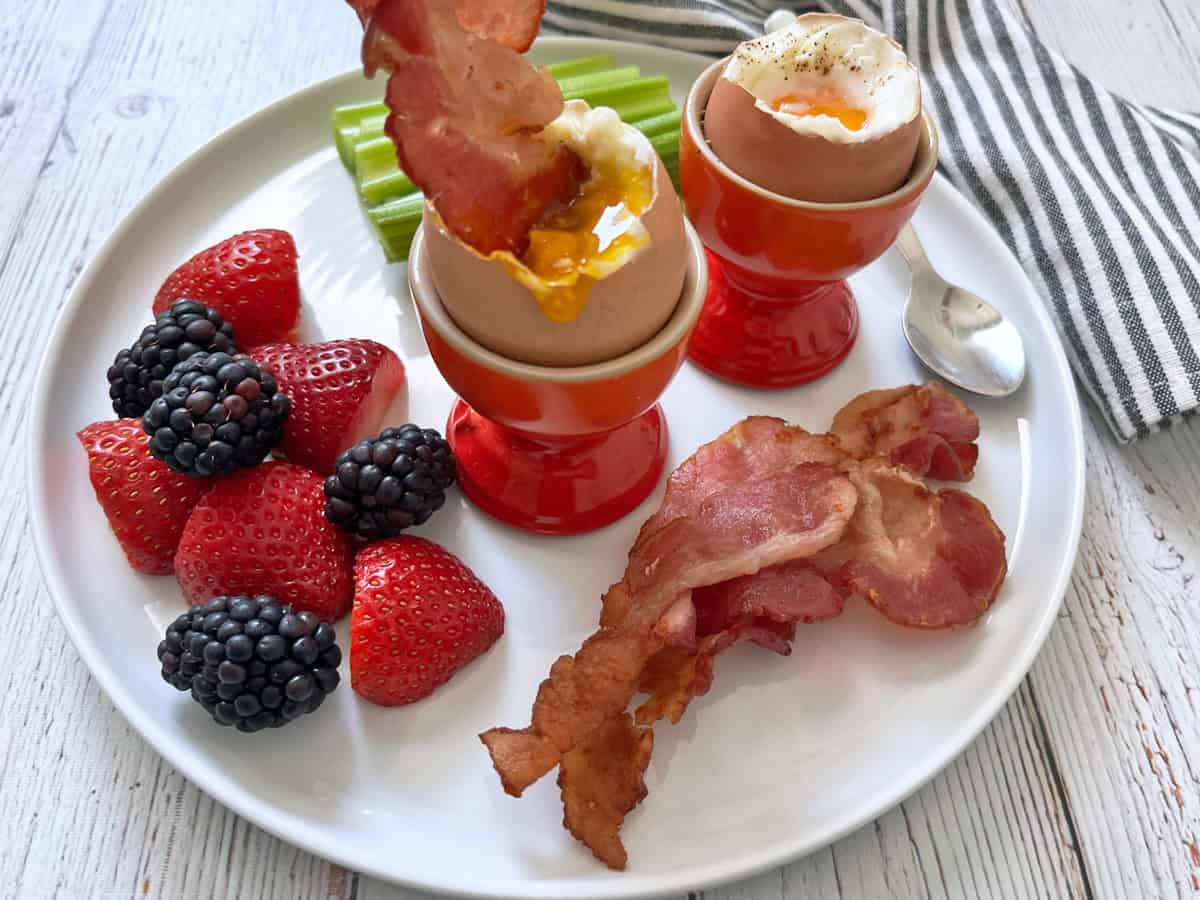
Sometimes, I use fresh-cut veggies as dippers. Carrot and celery sticks work especially well, as shown in the image below.
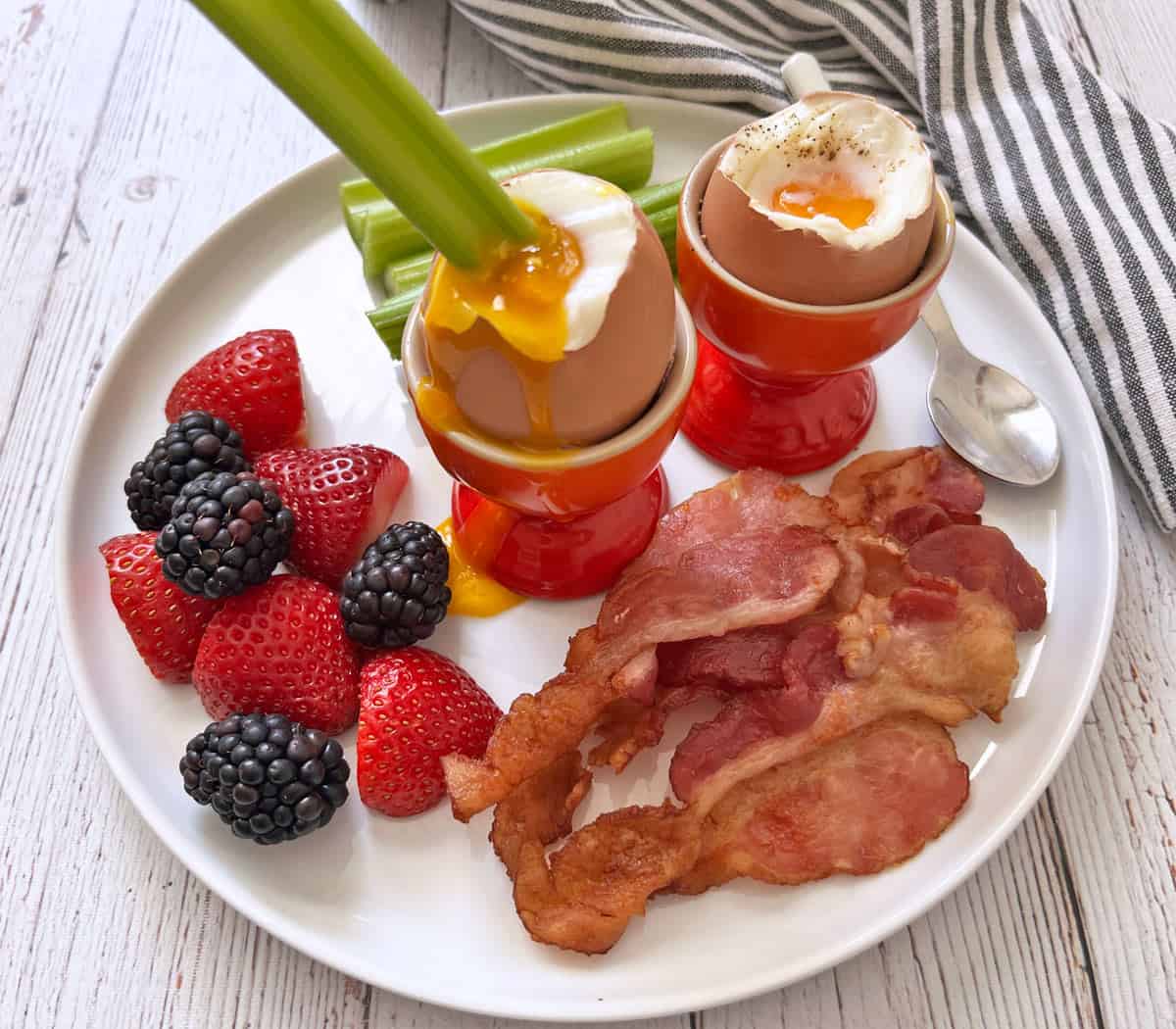
Of course, there's nothing wrong with simply eating them with a small spoon!
Recipe Card
How to Cook Soft-Boiled Eggs
Video
Ingredients
- 2 large eggs
- Salt and pepper - to taste
Instructions
- Remove the eggs from the fridge. In a small pot, bring water to a boil over high heat. How much water you use will depend on your saucepan. It should be enough to fully cover the eggs.2 large eggs
- Lower the heat to medium-low to maintain a gentle boil. Using a slotted spoon, gently lower the eggs into the water.
- Gently boil the eggs, uncovered, for exactly 5 minutes. Use a slotted spoon to remove the eggs from the water gently but quickly. Place them in egg cups.
- When cool enough to handle, slice the top of each egg with a sharp knife.
- Perfection achieved! A cooked white and a thick, runny yolk! Sprinkle the eggs with salt and pepper and dig in.Salt and pepper
Notes
- I've tested this recipe many times and do my best to provide accurate instructions, but getting it just right may still take a bit of trial and error. Many variables are at play - such as the size and temperature of the eggs and how vigorously the water boils. Your first couple of attempts might not be perfect, but once you adjust for the specific conditions in your own kitchen, you'll get consistently great results.
- The sodium info is for the eggs only; add salt to taste.
- The FDA recommends cooking eggs thoroughly.
- In contrast to hard-boiled eggs, where you should use fairly old eggs (this makes them easier to peel), here I recommend using eggs that are as fresh as possible.
- It's best to use eggs that are not refrigerator-cold to prevent the shells from cracking, especially since we're putting them into (gently) boiling water. But some eggs seem to have thin shells and are prone to cracking, no matter what you do.
- You can keep the leftovers refrigerated, in their shell, and in an airtight container for up to two days. Reheat them by briefly placing them in simmering water for no longer than one minute.
Nutrition per Serving
Save this Recipe!
We will also add you to our weekly newsletter. Unsubscribe anytime. See healthyrecipesblogs.com/privacy/ to learn how we use your email.
Disclaimers
Most recipes are low-carb and gluten-free, but some are not. Recommended products are not guaranteed to be gluten-free. Nutrition info is approximate - please verify it. The carb count excludes non-nutritive sweeteners. Please read these Terms of Use before using any of my recipes.

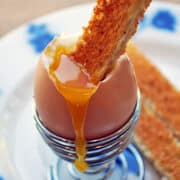
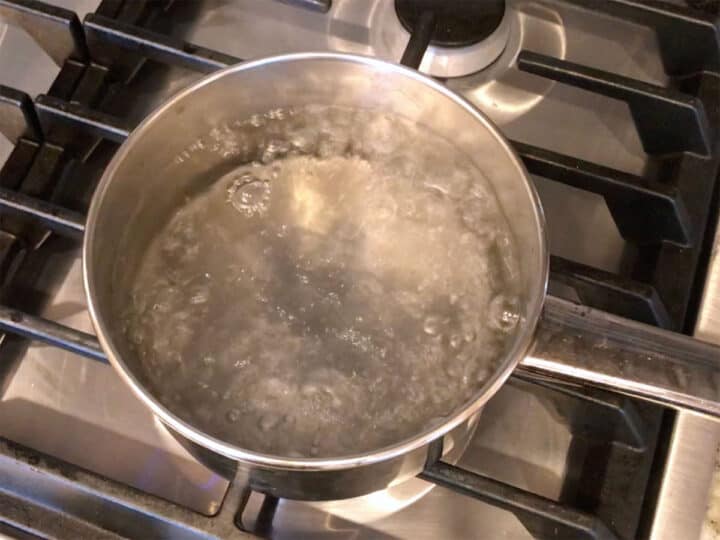
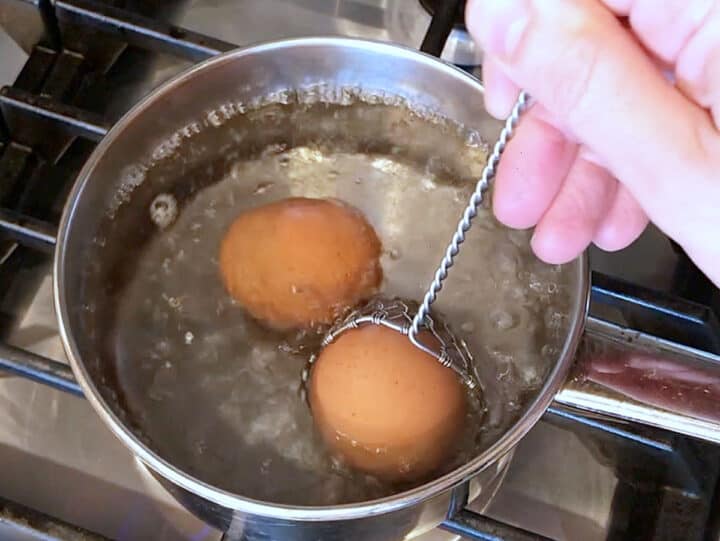
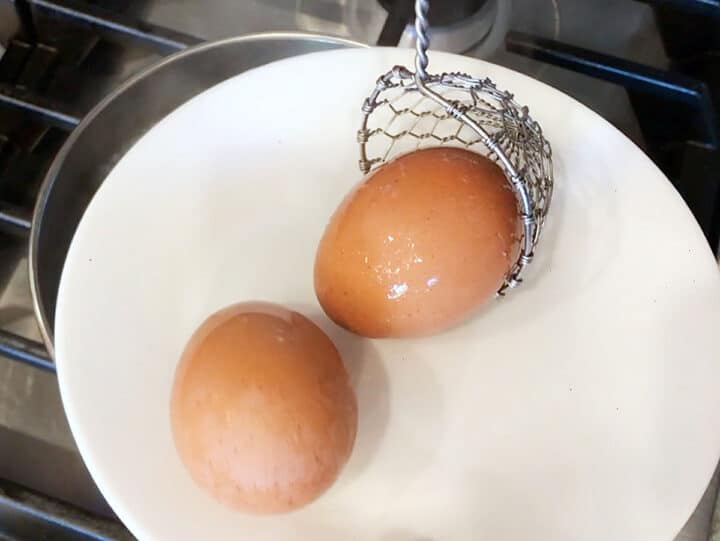

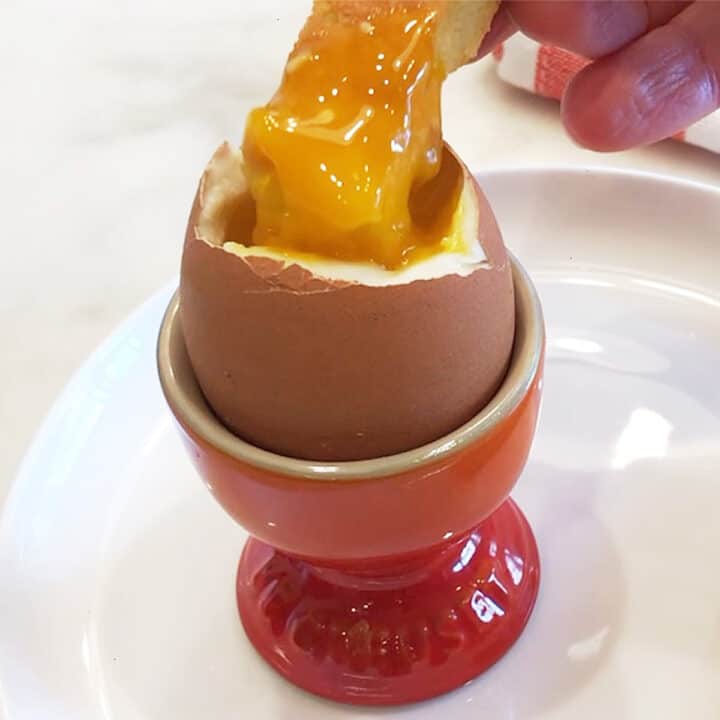
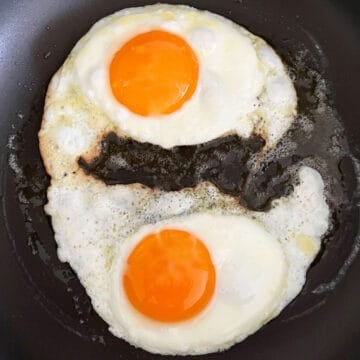
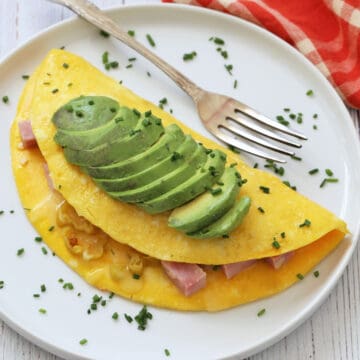


Jennifer says
Brilliant! So tasty.
Vered DeLeeuw says
I'm so glad this was a success, Jennifer! Thank you very much for the review.